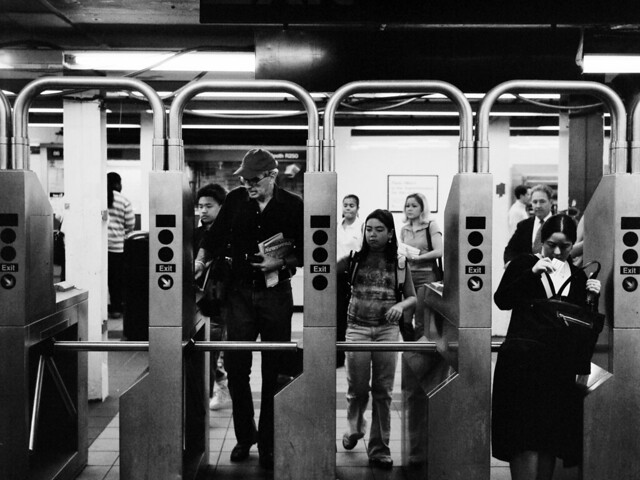Affordable Bus and Subway Fares Are Still Worth Fighting For

When the MTA introduced the 30-day unlimited-ride MetroCard in 1998, it cost $63. Today the cost of the 30-day pass is up to $112, a 77 percent increase. Over that time the base subway and bus fare doubled, from $1.25 to $2.50.
Meanwhile, wage growth has lagged. The average wage in the five boroughs increased only 54 percent from 1998 to 2012 (the latest year we have data). We know that most of these wage gains went to the city’s wealthiest earners, whereas wages for the middle class have stagnated or declined. For the vast majority of New Yorkers, a bigger chunk of their earnings is now needed to cover the cost of transportation (not to mention housing).
Despite these trends, former PlaNYC sustainability chief Rohit Aggarwala recently suggested in CityLab that riders would be better off covering a greater share of New York City Transit’s operating costs, arguing that poor transit service is rooted in a fare structure designed to lose money. Higher fares would mean more money for running the trains and buses, Aggarwala writes, which in turn would free up public funds to pay for capital projects, rather than operations.
As one of the chief architects of the PlaNYC initiative and the Bloomberg administration’s congestion pricing proposal, Aggarwala knows how vital an improved transit system is for the city’s future growth and sustainability. He estimates that if the subway fare went up to $5.80, the MTA would be able to borrow an extra $85 billion for capital projects.
This would pack a wallop, but Aggarwala questions whether all transit riders actually deserve to be subsidized: “The only reason to subsidize every transit rider, for every ride, is if you assume that the vast majority of riders do, in fact, deserve public subsidy.”
A higher fare is certainly one way to raise more money for transit, but framing the issue this way leaves out a much broader range of beneficiaries from a robust, reliable, and affordable transit system. Businesses benefit greatly from transit’s efficiency and the density of jobs and workers that the system allows. Property owners also benefit tremendously from the transit system. Land values and rents would be nowhere near as high as they are today without transit. Since businesses and real estate interests benefit from transit, they are among the biggest sources of tax support for transit.
State and local support for transit operations is a subsidy for riders in the way that public schools are a subsidy for families with school-age children. In both cases the public investment creates benefits for the society as a whole. I may not have kids in public school, but I’m better off living in a society in which every child receives a basic education.
Of course, Aggarwala is not suggesting that businesses and others should not contribute, but that their contributions should only be used for capital projects. Operations should pay for themselves and public dollars should go to capital projects. This is how it is done in Singapore and Tokyo. London is also moving toward this model. But this isn’t the only model. Transit in Paris is supported with substantial operating subsidies, as it is in New York.
In the case of the MTA, one reason a higher fare feels appealing to some transit supporters now is that major proposals to fund the agency’s capital program with road pricing have sputtered politically in recent years. Aggarwala, who saw congestion pricing die in Albany in 2008, is keenly aware of the government’s dismal record over the past few decades. “There is nothing in the record of the last half-century of subsidized U.S. transit that suggests long-term investments will ever be a priority,” he says.
In this light, the transit crisis in New York is not a financial problem — it’s a matter of priorities. And there is very recent evidence that the priorities of New York politicians will align with transit investment under the right circumstances. Five years ago, when the MTA was in the throes of an acute budget crisis, Albany approved the payroll mobility tax — raising more than a billion dollars annually for transit. Only a handful of state senators blocked tolling the East River and Harlem River bridges to cross-subsidize transit.
The politics of transit funding are not impossible in New York, and, as Aggarwala himself notes, the base of potential transit-supporting voters is growing. Instead of giving up on their institutions, giving up on the idea that our government can make a positive impact, these voters should demand that their elected representatives devote resources to support transit.
The alternative, to abandon the effort to make the state carry out its duties, is to give up on the democratic process.